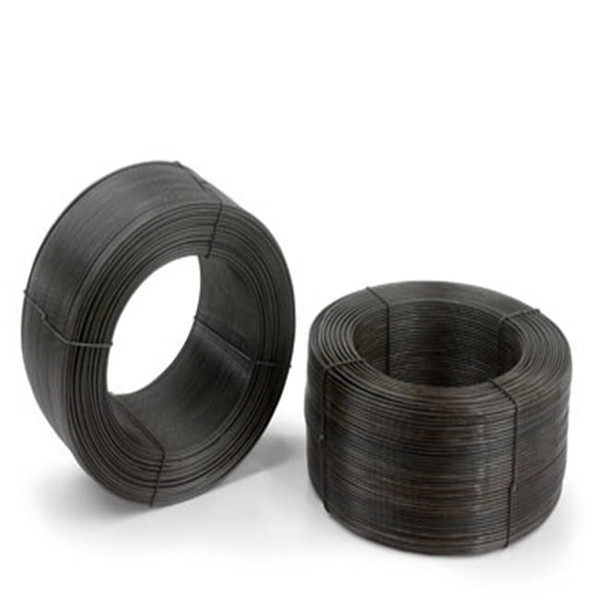Annealed wire often has annealing defects during the production process, such as “filaments” and so on. The so-called “filigree” means that the color of the annealed iron wire is uneven after pickling, and the normal annealed wire should be silver gray after pickling, with a metallic luster, while the annealed “filigree” sometimes has a black outer ring and a silvery inner layer after pickling. Gray, this phenomenon of inconsistent color of steel wire after pickling, our factory vividly calls it “filigree”.
From the comparison of the drawing strength of the annealed wire after annealing, it can be seen that the tensile strength of the silver-gray surface is greater than 490MPa when the filament appears, and its metallographic structure is fine and uniform equiaxed grains; while the tensile strength of the blackened surface is only 405MPa, and its The metallographic structure shows coarse grains, which indicates that an overburning reaction may have occurred during the heat treatment process, so we observed the metallographic structure on the surface of the iron wire. Through the observation of the crystal direction of the low-carbon cold-drawn iron wire, it is considered that the rotation of the crystal grains around the drawing direction is caused by the surface shear deformation. In addition, due to this rotation, the grains of the surface layer are finer than those of the center layer, so the tensile strength of the surface layer is much higher than that of the center layer. We also measured the size of the grain size, and selected a 2.7 mm annealed wire longitudinal section sample, the core of which is a fine-grained structure with a grain size of 89, and each edge has a coarse-grained structure with a depth of 0.6 mm, and the grain size is 12 grades. This kind of grain growth indicates that the burning loss of C, Mn and Si elements may have occurred during the annealing process.
Due to the overburning reaction, under the high temperature condition, the oxidation reaction speed between the steel and the oxygen in the air will increase exponentially. If the furnace is damaged and the oxygen is enriched, the oxidation will be serious. Thick skin and complex composition, in addition to oxides of iron, there are also oxides of manganese and silicon, and carbon enrichment caused by decarburization on the surface of iron wire. After pickling with hydrochloric acid, the surface is rough, and the reflection of light is similar to that of normal wire. The surface reflects light differently, resulting in uneven pickling color, and the phenomenon of “filaments” appears. The reason for the formation of “filigree”phenomenon is mainly that the semi-finished product is oxidized and burned due to high furnace temperature and oxygen-enriched furnace during annealing. The surface of the steel wire after pickling is rough, and the reflection of light is different from the normal surface. By improving the temperature control system of the annealing furnace, using a lined furnace, heating the air circulation device, and strengthening process control, the phenomenon of “filaments” can be effectively .
Post time: Jun-30-2023






